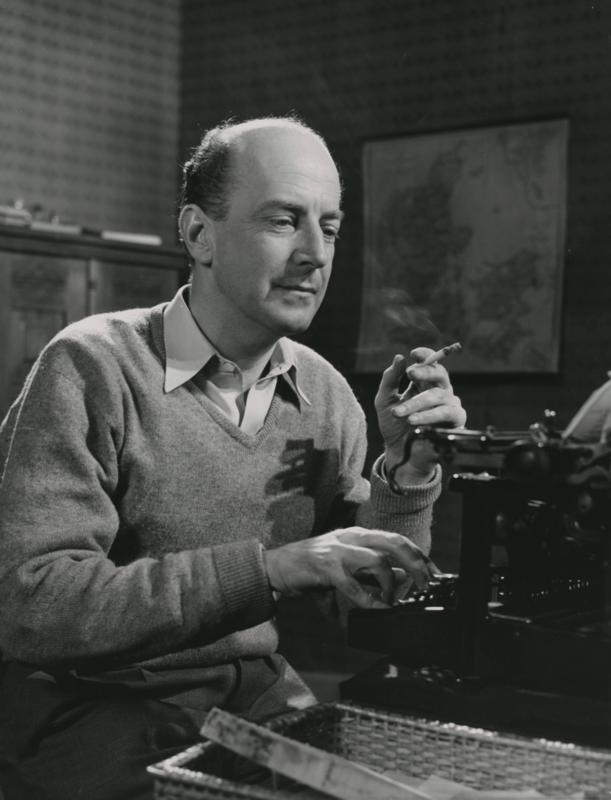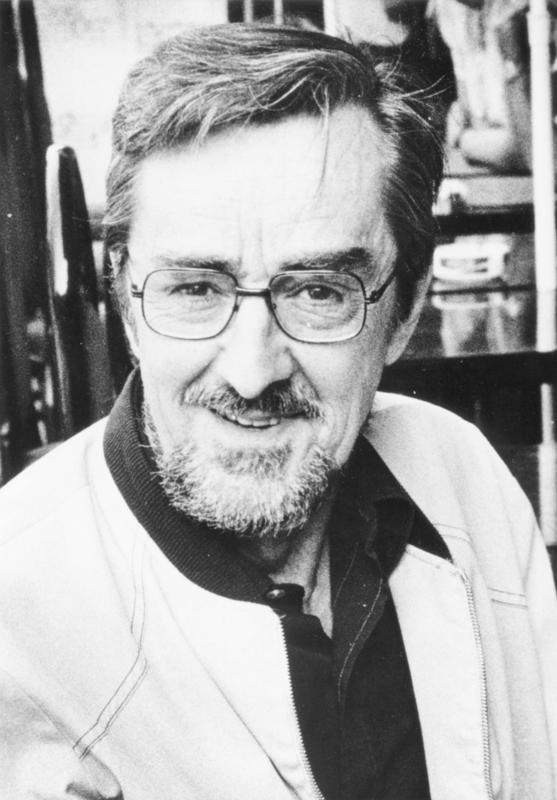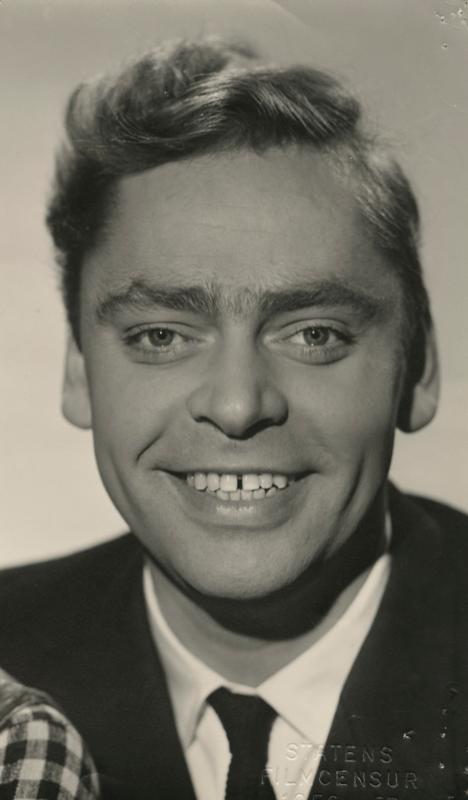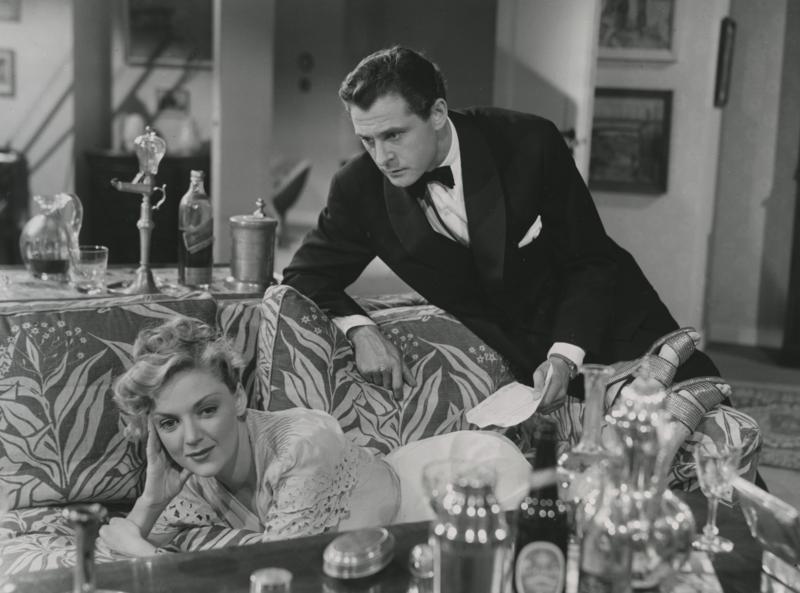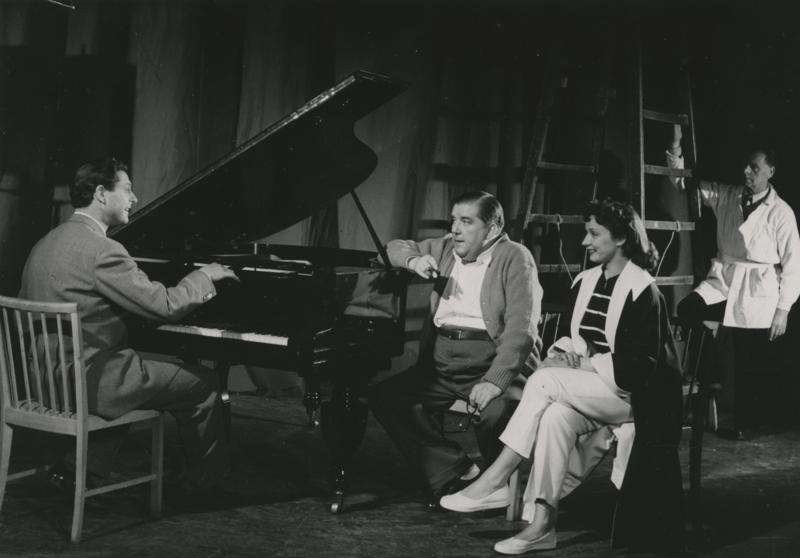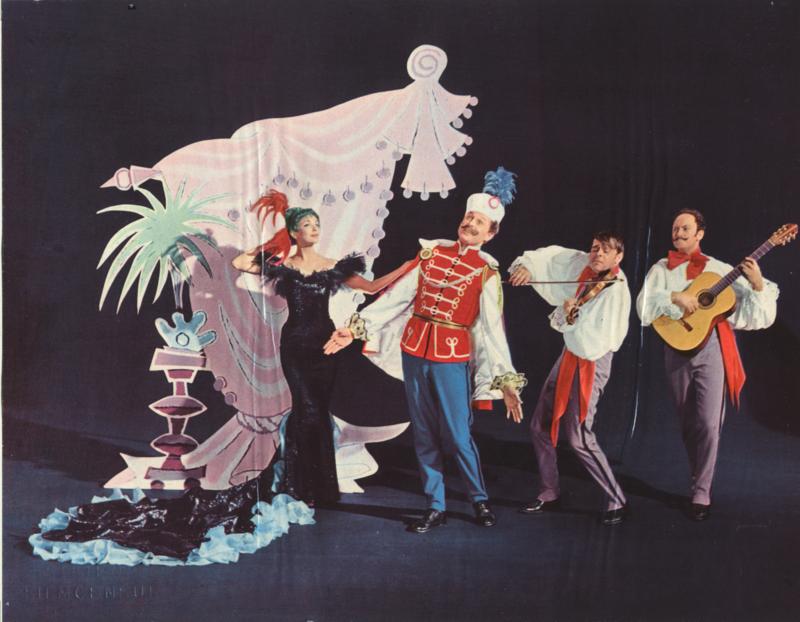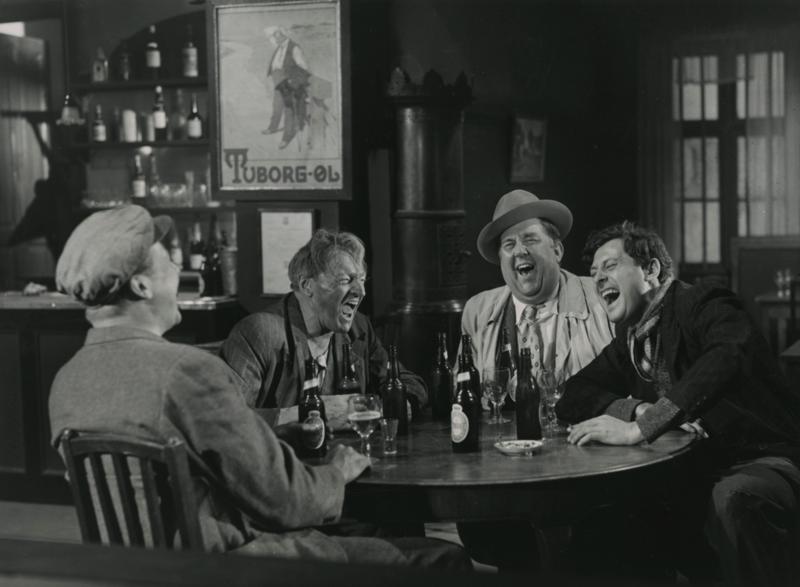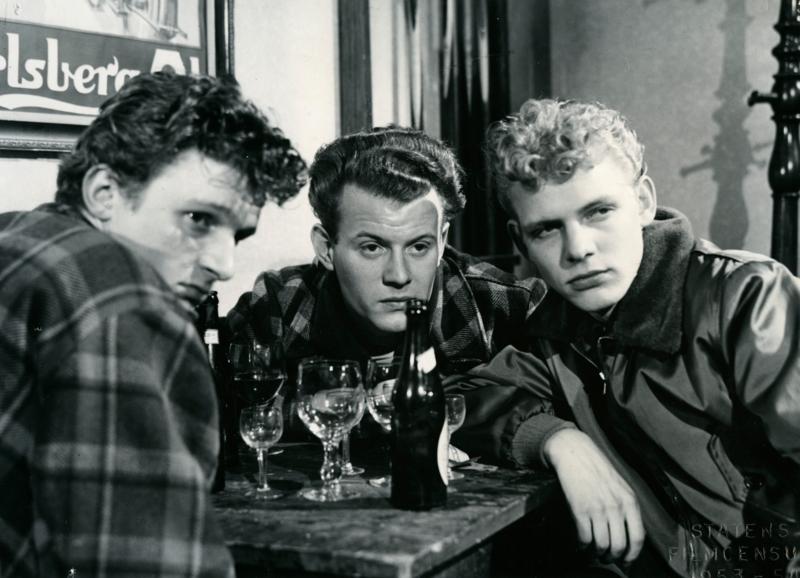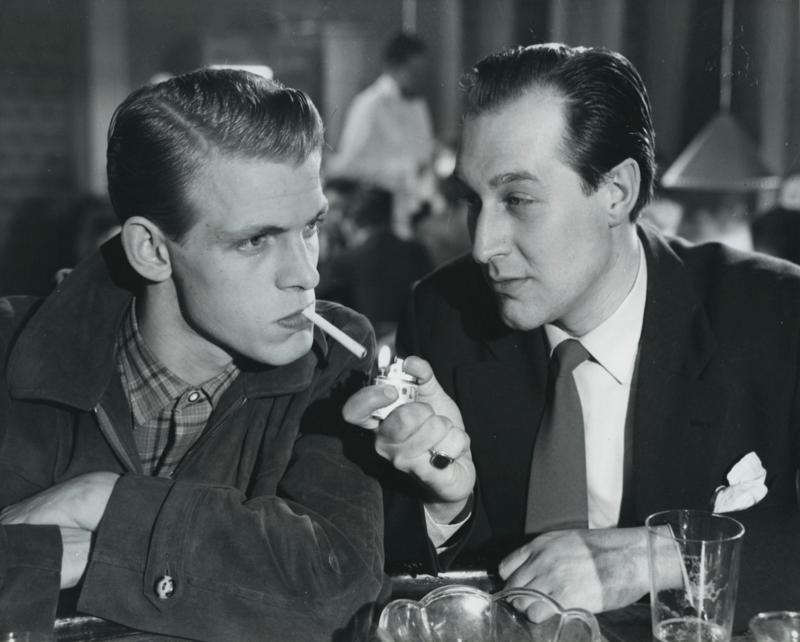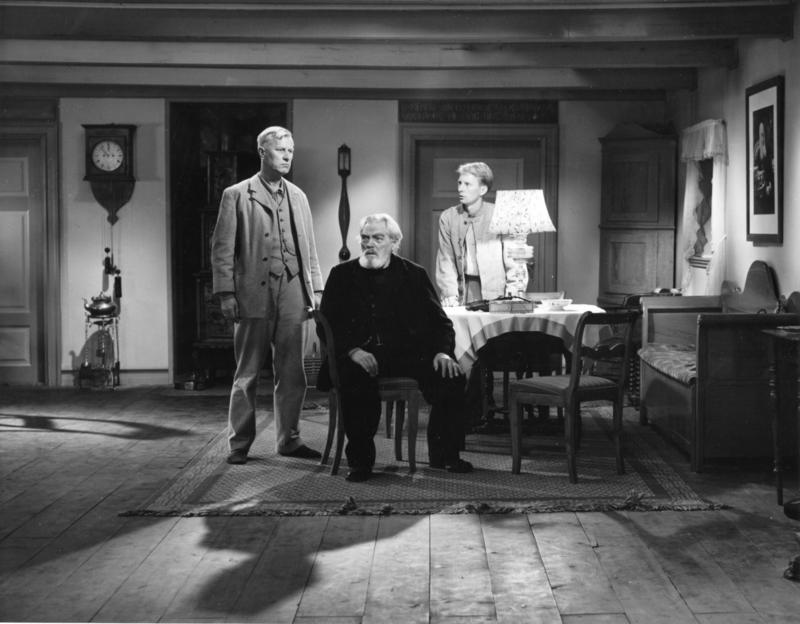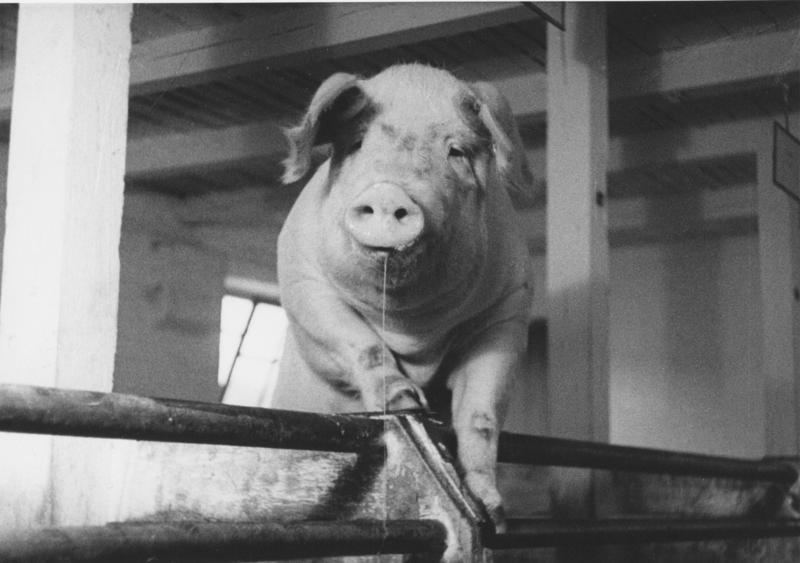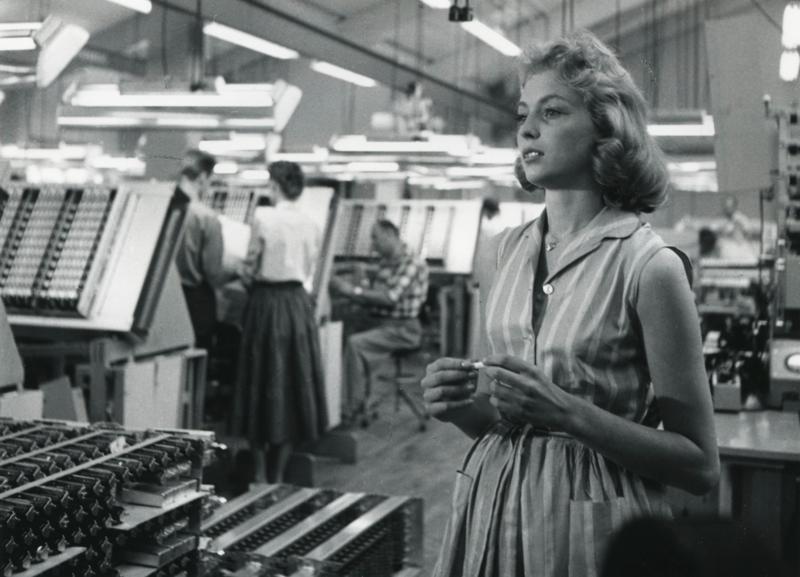Back to the folk comedies: 50s feature films
The new realism in Danish cinema ended abruptly at the start of the new decade, which was marked by the return of the escapist, patriotic, cosy culture, which was characteristic of the 1930s folk films.
After the violence and trauma of the war there was an apparent need to get back to traditional Danish values.
It was symptomatic, that Nordisk Film first fired the married couple Astrid and Bjarne Henning-Jensen, followed by Ole Palsbo, who had run afoul of the company during the shooting of a new film (shortly thereafter he committed suicide). The movie, Vi arme syndere (1952), was taken over by the company's new man, Erik Balling, who stood for a more populist style that, however, didn't quite succeed for Nordisk Film in the following years.
The decade's largest successes were produced by Henning Karmark, whose membership in the Danish Nazi party was quickly forgotten. For his company ASA Filmudlejning (not to be confused with ASA), he procured the rights to author Morten Korch, rights other companies had turned down. Korch's popular novels about Danish country life, a kind of heimat-kitsch, were the widest read books of the time, and they lead to the biggest box office success ever in Denmark. The Red Horses (1950), the first of thirteen films in the period of 1950-1967, sold over 2,6 million tickets (for a population of 4,5 million) and cemented Poul Reichhardt's stardom.
The director of the films was Alice O'Fredericks, who undoubtedly is film history's most productive and powerful female director. She also made the popular family films Father of Four (eight films between 1953-1961), which offered up cosy family life from the confines of suburbia, produced by the company ASA, established in 1936.
Other distinctive films were Johan Jacobsen's virtuoso marital comedy My Wife is Innocent (1950); Torben Anton Svendsen's Mød mig på Cassiopeia (1951), a musical with Kai Normann Andersen's finest music, where a muse (Bodil Kjer) from Olympus visits Earth and despite Zeus's warnings falls in love; Erik Balling's romantic comedy Kispus and the Greenland drama Qivitoq (both 1956), the first Danish live-action color films, Gabriel Axel's social and everyday realistic Nothing but Trouble (1955) as well as the comedy Golden Mountains (1958), which with friendly satire pitched Danish provincialism against American business.
The period's biggest comedy star was Dirch Passer, who often unfolded his exuberant and subtle humor in partnership with Ove Sprogøe (Det var på Rundetårn, 1955) or Kjeld Petersen (Vi er alle sammen tossede, 1959).
Problems knocking on the door: Other directions in 50s cinema
However, there were also problem-oriented films. Bodil Ipsen's Café Paradis (1950) effectively illustrated the dangers of alcoholism. But much like American cinema, it was especially the troubles of the youth and their lifestyles that were depicted. Films such as Farlig ungdom (1953), The Young Have No Time (1956) and Dregs (1957), about male prostitutes, were both cautioning and titillating.
Outside the trends of the time, first and foremost comes Dreyer's monumental comeback The Word (1955), which would become his biggest success with Danish audiences, but also Johan Jacobsen's cold war drama Blændværk (1955), one of the few films that makes political themes tangible, as well as his intense drama about the traumas of occupation, A Stranger Knocks (1959), which caused a sensation due to the first portrayal of intercourse in Danish cinema.
Film posters from the 1950s
Opinions of the time: Documentary cinema in the 1950s
In the documentary world Jørgen Roos is notable with the indignant Slum (1952), Den strømlinede gris (1952), about Danish pig breeding and the H.C Andersen portrait The Story of My Life (1955). Bjarne Henning-Jensen made the Greenland film Where Mountains Float (1955), which was nominated for an Oscar in the category "Documentary (feature)" and Børge Høst portrayed Poul Henningsen in Meninger i tiden (1955). Theodor Christensen's Bare en pige (1959) was a debate film about equal rights and discrimination.
Expensive dreams: American film blockade
American films returned to the Danish screens after the liberation and immediately regained the dominant position they had previously held. However, in the middle of the 50s a tiff in the cordial relationship between the Danes and the Americans arose.
The big American companies, represented in MPEA, were unhappy with the low percentages the Danish theatres were paying. This was partially caused by the Danish government's unwillingness to offer foreign currency for film purchases. As a counter move, the American companies withheld the big productions from the Danish market, which lead to the creation of the Scarlett-ferries in 1954 so that Copenhageners could go to Landskrona, Sweden to see Gone with the Wind (1939). Between October 1955 and July 1957 the MPEA established a regular blockade against the Danish cinemas, which didn't receive the big American productions until 1958. 'Gone with the Wind' premiered in Denmark in 1958.


